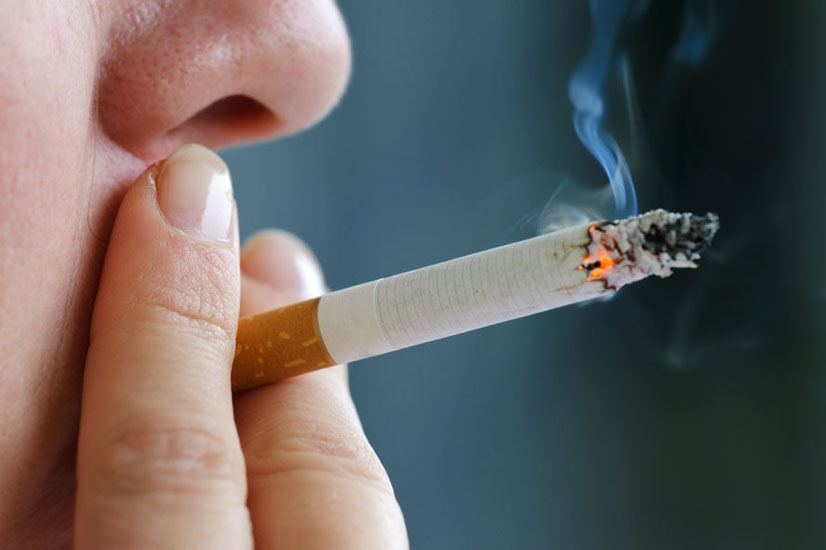Report: Feds failing to control tobacco use
FDA gets an "F"

According to the American Lung Association’s (ALA) 2019 "State of Tobacco Control" report released today, states and the federal government have failed to take meaningful action in putting in place policies to prevent and reduce tobacco use, the nation's leading cause of preventable death and disease. In addition, youth use of e-cigarettes has reached epidemic levels — rising 78 percent from 2017 to 2018 — setting the stage for another generation of Americans addicted to tobacco products and ultimately more tobacco-caused death and disease.
The ALA's annual "State of Tobacco Control" report grades states and the federal government on steps taken to enact proven effective tobacco control policies. An estimated 480,000 deaths are caused by tobacco use every year, and 27.1 percent of high school students used at least one tobacco product in 2018, up dramatically from 19.6 percent in 2017. Within this context, "State of Tobacco Control" 2019 sounds the alarm and calls for the federal government and states to take urgent action to reduce and prevent tobacco use.
"We know how to save lives – with the proven tobacco control policies called for in ‘State of Tobacco Control'," said ALA National President and CEO Harold P. Wimmer. "This year's report finds a disturbing failure of the federal government and states to take action to prevent and reduce tobacco use in 2018, placing the health and lives of Americans at risk, including our youth."
How states rate on prevention, cessation help
"State of Tobacco Control" 2019 grades states and the District of Columbia in five areas that have been proven to prevent and reduce tobacco use and save lives:
- Funding for State Tobacco Prevention Programs – 43 states and D.C. received "F" grades in this grading category
- Strength of Smokefree Workplace Laws – 29 states and D.C. received a grade of "B" or better, making this the grading category where states received the best grades overall. (Note: This year the grading category was updated to reflect the inclusion of e-cigarettes in smokefree laws.)
- Level of State Tobacco Taxes – 34 states received an "F" grade in this grading category
- Coverage and Access to Services to Quit Tobacco – 37 states and D.C. received a "C" grade or worse in this grading category
- Minimum Age of Sale for Tobacco Products to 21 – 40 states received an "F" grade in this grading category
In this year's report, no state earned an "A" grade in every category, but the best states were Alaska, California, the District of Columbia, Hawaii, Maine and Massachusetts. The states earning the worst grades (all F's) are Mississippi, Missouri, Texas and Virginia. State report cards as well as federal grades can be found at Lung.org/sotc.
Federal agencies mostly got failing grades
"State of Tobacco Control" 2019 grades the federal government in four areas:
- U.S. Food and Drug Administration (FDA) Regulation of Tobacco Products (2019 grade – "F")
- Federal Coverage of Quit Smoking Treatments (2019 grade – "D")
- Level of Federal Tobacco Taxes (2019 grade – "F")
- Federal Mass Media Campaigns to Prevent and Reduce Tobacco Use (2019 grade – "A")
In November 2018, FDA announced its intention to pursue several measures to address the skyrocketing e-cigarette use among kids, however the proposed actions amounted to half measures that are unlikely to have a meaningful impact in reducing youth e-cigarette use, according to the Lung Association. FDA also announced it intends to propose a rule to remove menthol cigarettes and all flavored cigars from the marketplace. While such an action would be historic if taken, the lack of concrete actions by FDA in 2018 results in another "F" grade for FDA Regulation of Tobacco Products in "State of Tobacco Control" 2019.
"All states and the federal government can do more to reduce tobacco use; the FDA in particular has been asleep at the switch for far too long. Their failure to act for years set the stage for e-cigarette use among youth to finally explode into an epidemic," said Wimmer. "We call on the FDA and Commissioner Gottlieb to make 2019 the year it takes decisive action on youth e-cigarette use and removes menthol cigarettes and flavored cigars from the marketplace."
"The FDA's failure to act has also emboldened the tobacco industry, which has become increasingly aggressive in seeking to delay or oppose the proven policies called for in ‘State of Tobacco Control' that would save lives," he said.
These efforts, according to Wimmer, include lobbying on Capitol Hill to weaken FDA's authority over tobacco products and spending over $22 million dollars to oppose ballot measures to increase tobacco taxes in Montana and South Dakota.
The report also found modest progress was made on laws to increase the tobacco sales age to 21 and increasing tobacco taxes in 2018, with Massachusetts passing a Tobacco 21 law and the District of Columbia and Oklahoma passing significant tobacco tax increases. In total, six states and the District of Columbia have now enacted Tobacco 21 laws, which will significantly reduce youth tobacco use and save lives.
States aren't using tobacco settlement dollars as they're supposed to
November 23, 2018 marked the 20th anniversary of the tobacco Master Settlement Agreement where 46 states and the District of Columbia settled with the tobacco industry and continue to receive ongoing annual payments that can and should be used to help states fund tobacco prevention programs. This anniversary is a vivid reminder of the failure of states to dedicate money from these settlement payments or from tobacco taxes to fund tobacco prevention programs. States received $27.3 billion in total from such funds in fiscal year 2019, but "State of Tobacco Control" 2019 finds no states are using these funds to invest in tobacco prevention programs at levels recommended by the Centers for Disease Control and Prevention (CDC). Three states – Connecticut, Tennessee and West Virginia – provide no state funding at all for such programs.
"States must summon the political will to use these tobacco settlement payments and revenue from tobacco taxes to adequately fund tobacco control efforts, and pass smokefree workplace laws, Tobacco 21 laws and large tobacco tax increases to reduce tobacco use among youth and adults," Wimmer said. "The health of our children is on the line - the time for half measures is over."
Looking for a reprint of this article?
From high-res PDFs to custom plaques, order your copy today!





.jpg?t=1721257160)

